Reproduction is a very important topic in the class 10th Biology section. Reproduction is the biological process by which living organisms generate offspring of their own kind or produce new individuals of the same species, ensuring the continuity of their genetic lineage. Reproduction can occur through sexual or asexual means, involving the transmission of genetic material from the parent to offspring.
Sexual reproduction involves the fusion of gametes (sperm and egg cells) from two parents, resulting in genetically diverse offspring. Asexual reproduction involves the creation of offspring without the involvement of gametes, leading to genetically identical or nearly identical progeny.
Sexual Reproduction Definition
Sexual reproduction is a biological process in which two individuals of the same species, typically one male and one female, combine their genetic material to produce offspring. This involves the fusion of specialized reproductive cells, called gametes, which results in genetic diversity among the offspring.
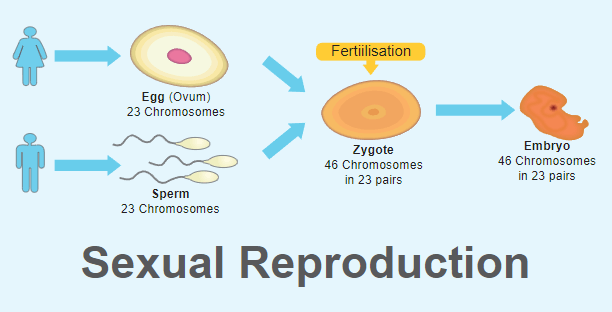
In sexual reproduction, specialized cells called gametes are produced through a process known as meiosis. These gametes, typically sperms in males and eggs in females, contain half the usual number of chromosomes found in regular body cells. When a sperm fertilizes an egg, its genetic material combines to form a unique set of genetic instructions for the developing offspring.
Sperm
Sperms also known as spermatozoa, are the smallest and highly specialized male reproductive cells produced in the testes of animals, including humans. Sperm are specialized male reproductive cells carrying genetic information, involved in fertilization during sexual reproduction in many organisms.
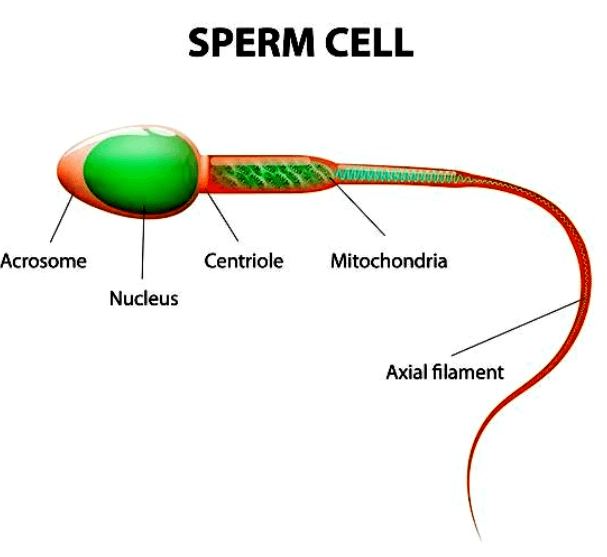
Eggs
An egg, also called an ovum, is a large female cell that contains important genetic material. It plays a crucial role in reproduction. When fertilization occurs, the egg combines with a male sperm cell, allowing the development of a new organism, such as a baby in humans or offspring in animals. This process is essential for the continuation of life in many species, ensuring the next generation.
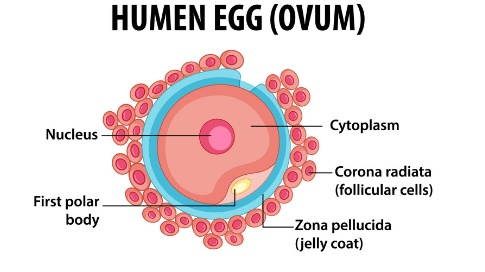
Stages of Sexual Reproduction
We have mentioned all the stages of Sexual reproduction below. The process of sexual reproduction is much more lengthier than that of the process of asexual reproduction. Keep in mind that specific details can vary among different organisms, but these stages generally capture the essence of sexual reproduction in animals.
| Different Stages of Sexual Reproduction | ||
| Stages | Name of the Stage | Description |
| Stage 1 | Gamete Production | Male and female reproductive cells (sperm and egg) are produced through the process of meiosis. |
| Stage 2 | Fertilization | A sperm cell fertilizes an egg cell, forming a diploid zygote. |
| Stage 3 | Zygote Development | The zygote undergoes cell division through mitosis, forming a multicellular organism. |
| Stage 4 | Growth and Development | The multicellular organism develops into a mature individual through various stages, including embryo, fetus, and adult. |
| Stage 5 | Reproduction | The mature individual reaches reproductive maturity and can produce gametes, continuing the cycle. |
- Gamete Formatting: Specialized cells called gametes (sperm and egg cells) are produced by the parents through a process called meiosis. This results in cells with half the usual number of chromosomes, ensuring genetic diversity in the offspring.
- Fertilization: The male gamete (sperm) fuses with the female gamete (egg) to form a zygote. This restores the diploid chromosome number in the zygote, which will develop into the offspring.
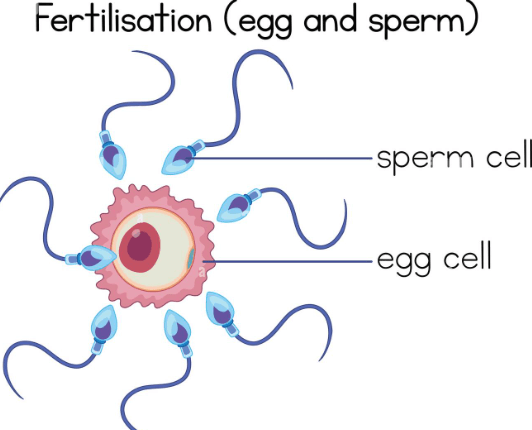
- Zygote Development: The zygote begins to divide through a process called mitosis. It undergoes multiple rounds of cell division, forming a blastocyst or embryo.
- Implantation: The blastocyst or embryo attaches to the lining of the uterus (endometrium), where it receives nutrients and support from the mother’s body.
- Embryonic Development: The embryo undergoes further cell differentiation and organ formation. This stage includes various developmental milestones and the formation of the basic body plan.
- Fetal Development: Once major organ systems are established, the embryo becomes a fetus. It continues to grow and mature, with most of the organ development occurring during this stage.
- Birth: The fetus reaches a stage of development where it is ready to survive outside the mother’s womb. Labor and childbirth occur, leading to the delivery of the baby.
Advantages of Sexual Reproduction
The advantages mentioned below contribute to the long-term success and adaptability of sexually reproducing organisms within their environments.
- Genetic Diversity: Offspring inherit a combination of genes from both parents. This genetic variation increases the chances of survival in changing environments and helps populations adapt to new challenges.
- Evolutionary Adaptation: Sexual reproduction enables a faster pace of evolutionary changes compared to asexual reproduction. The shuffling and recombination can provide advantages in the face of natural selection.
- Elimination of Harmful Mutation: In sexually reproducing organisms, harmful mutations are often “masked” by the presence of a healthy allele from the other parent. This reduces the likelihood of detrimental genetic traits being expressed.
- Repair of Damaged DNA: Some forms of sexual reproduction involve DNA repair mechanisms that can fix errors and mutations that occur during DNA replication. This helps maintain genetic integrity.
- Enhanced Immune Response: The diverse gene combination resulting from sexual reproduction can lead to a broader range of immune responses in offspring, improving their ability to combat infections and diseases.
- Social Benefits: In species with complex social structures, sexual reproduction can contribute to the development of cooperative behaviors and alliances, which can enhance survival and reproduction.
Examples of Sexual Reproduction
We have mentioned some examples that showcase the diversity of sexual reproduction across the animal kingdom and plant kingdom, highlighting the various ways organisms have evolved to ensure the survival of their species.
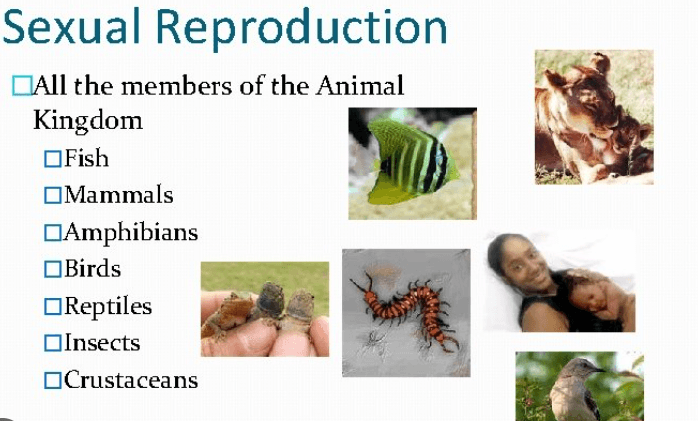
- Platypus: The platypus is a unique mammal that lays eggs. It reproduces sexually through internal fertilization, and the eggs develop outside the mother’s body.
- Marine Animals: Marine creatures like fish, sharks, and whales generally reproduce sexually. They have diverse reproductive strategies, including internal and external fertilization.
- Reptiles: Reptiles such as snakes and lizards reproduce sexually. They lay eggs, and fertilization can occur internally or externally, depending on the species.
- Insects: Insects like butterflies and bees reproduce sexually. Males produce sperm, and females lay eggs that are fertilized by the stored sperm. Insects often have unique mating behavior and rituals.
- Frogs: Frogs and other amphibians reproduce sexually. They lay eggs in water, and males release sperm to fertilize the eggs externally.
- Humans: Humans reproduce sexually through the fusion of a sperm cell from a male with an egg cell from a female. This results in the formation of a zygote, which develops into a baby.

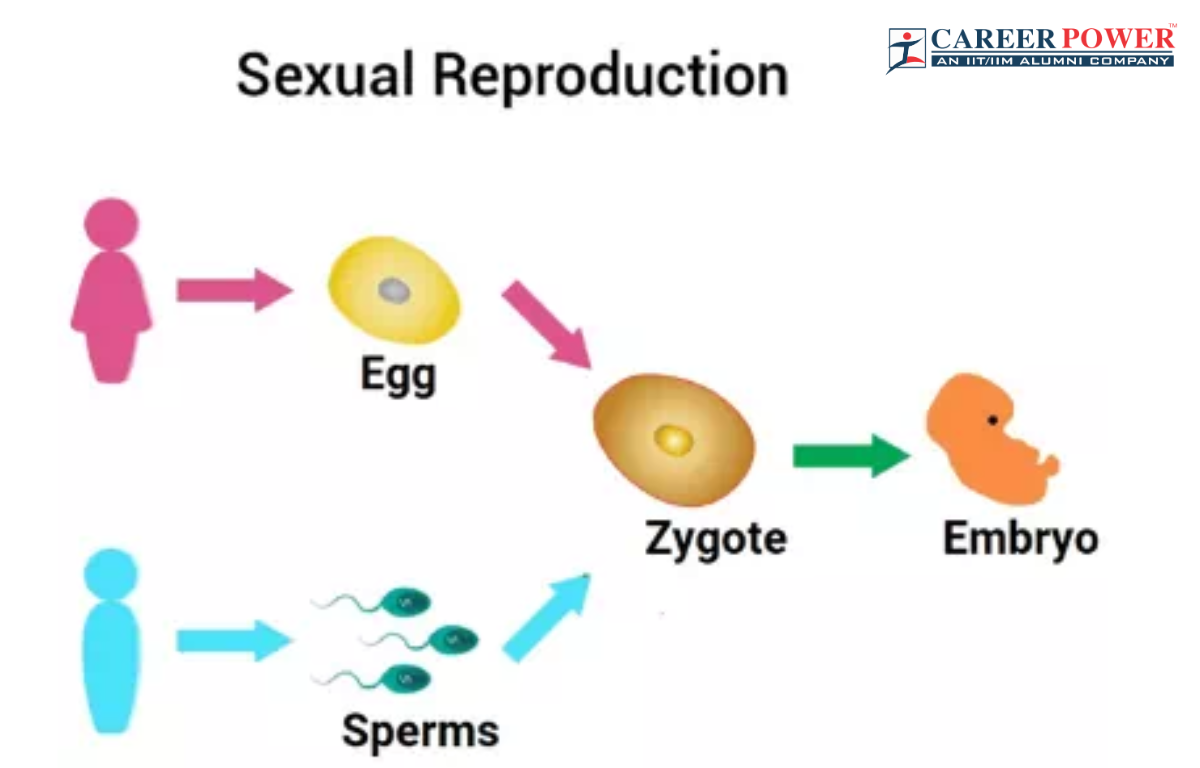

 50 Vegetables Name for Kids in English a...
50 Vegetables Name for Kids in English a...
 Food Chain: Definition, Types, Examples,...
Food Chain: Definition, Types, Examples,...
 Human Respiratory System: Definition, Di...
Human Respiratory System: Definition, Di...













